Last fall’s visit to Mr. Kita’s bonsai collection was a real treat – I can only imagine how nice it would be to see such a scene in one’s own backyard.

Boon Manakitivipart, a white pine, and Peter Tea
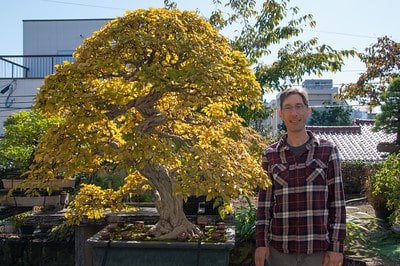
A towering hornbeam
Few gardens include large Chojubai like the specimen below.
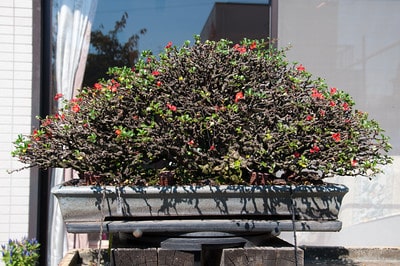
Japanese quince ‘Chojubai’
Kita’s garden had two.
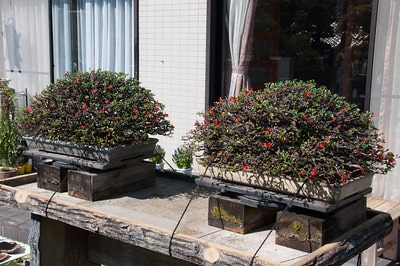
A stately pair of Chojubai
The hinoki in Kita’s garden offered examples of what we aim for when we develop trees with similar growth habits.
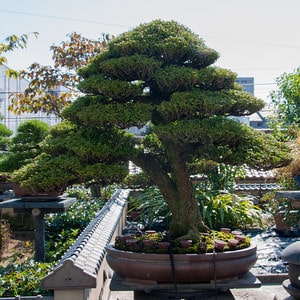
Hinoki
Beneath the foliage of each pad lie scores of thin branches that lead back to each primary branch – development that requires both time and technique.
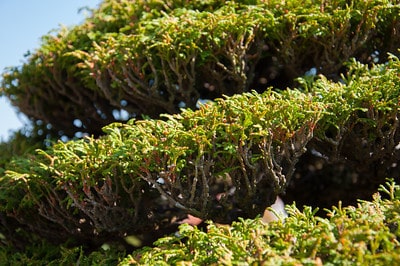
Well-developed branch pads
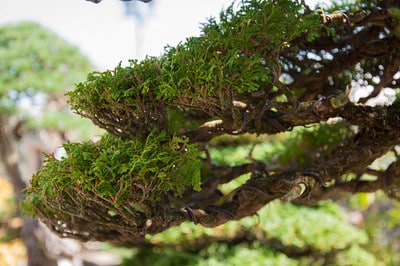
Hinoki branch pads – side view
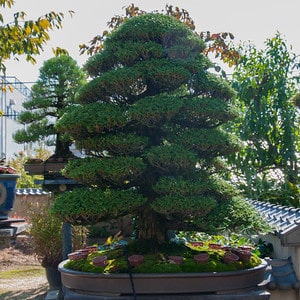
Hinoki
It was also clear that these trees received a lot of food. In many cases, fertilizer baskets completely lined the perimeters of the pots.
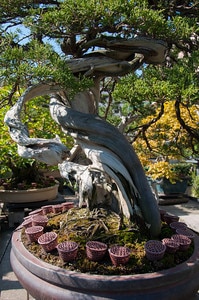
Fertilizer baskets
In keeping with the aesthetic of the synthetic turf that lined the ground, the trees were displayed on cement tables I’d seen in a number of Japanese enthusiasts’ yards. The tables can let water drain or pool to retain moisture as the season requires.
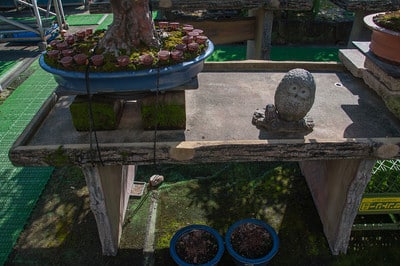
Cement bonsai table
These details, however, received little notice – we were too busy with trees like the famous white pine below.
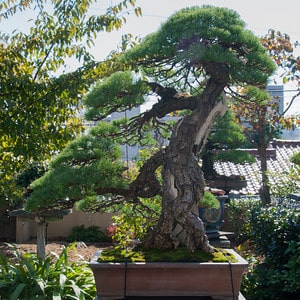
White pine
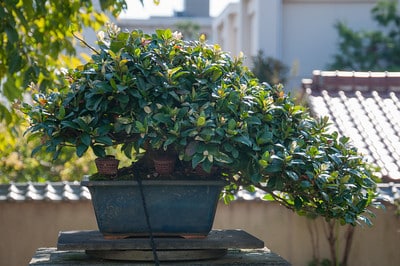
Tekka Kazura – Trachelospurmum asiaticum
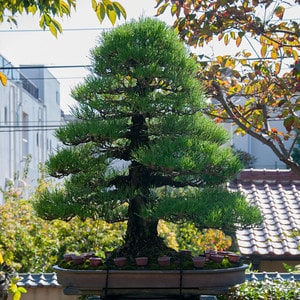
Black pine
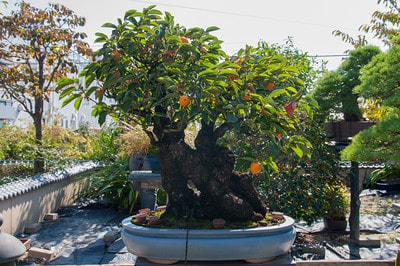
Persimmon
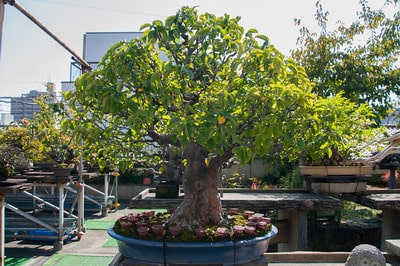
Chinese quince
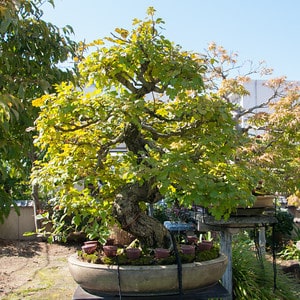
Hawthorn
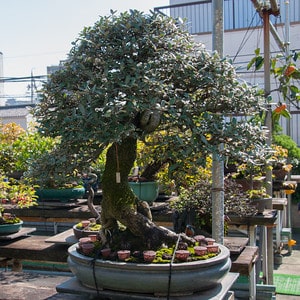
Eleagnus
Subscribe to Bonsai Tonight
New Posts Delivered Every Tuesday and Friday
John DeMaegd says
All I can say is WOW! And what a great way to make tables for Bonsai out of cement with areas to either have water or let it drain out! I may be making some for my collection.
Jay Miller says
Echo on the “WOW!!!”. It appears that these magnificent bonsai are in a rooftop garden. That’s a considerable weight. Did Mr. Kita reinforce his roof?
Jay Miller